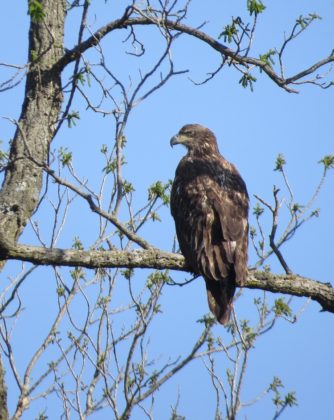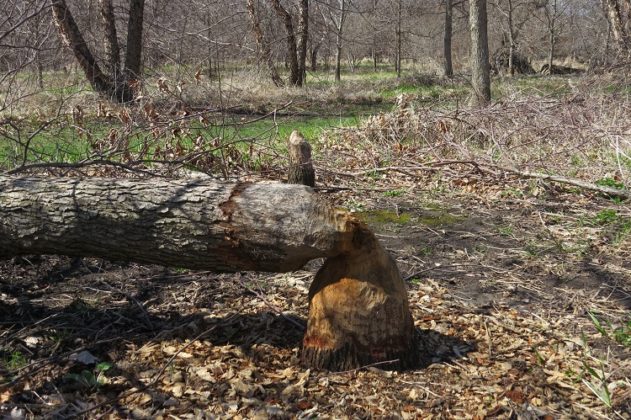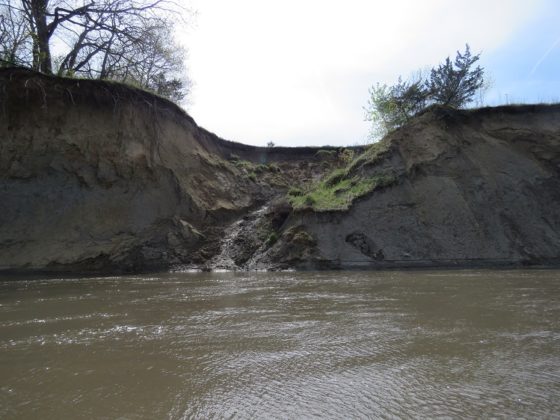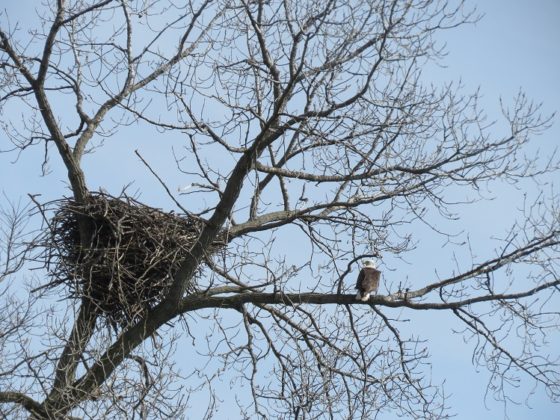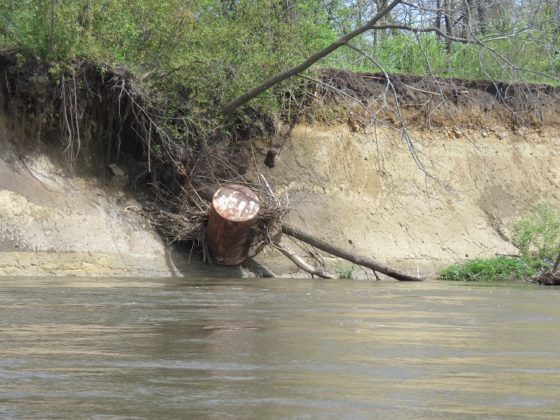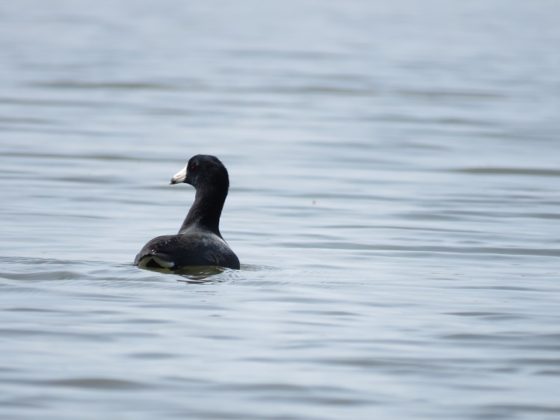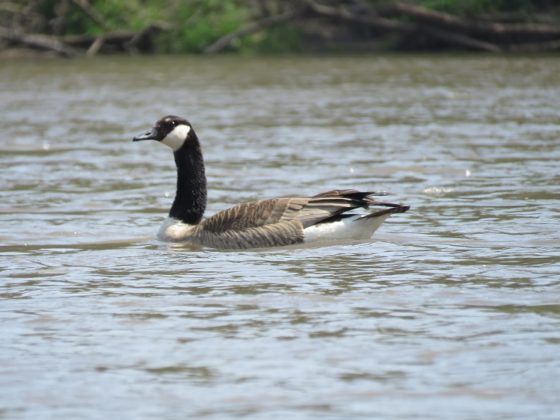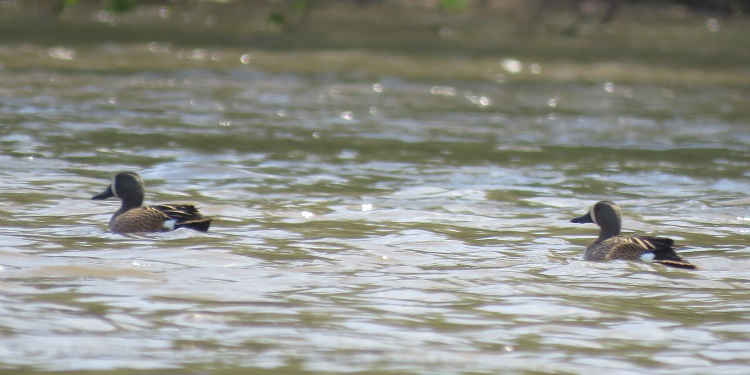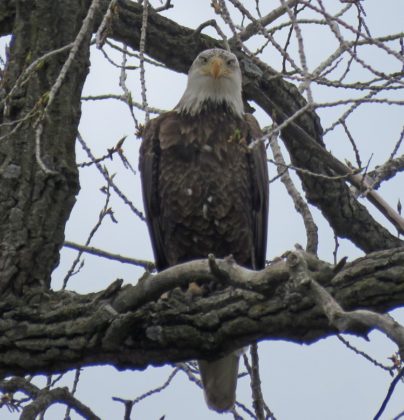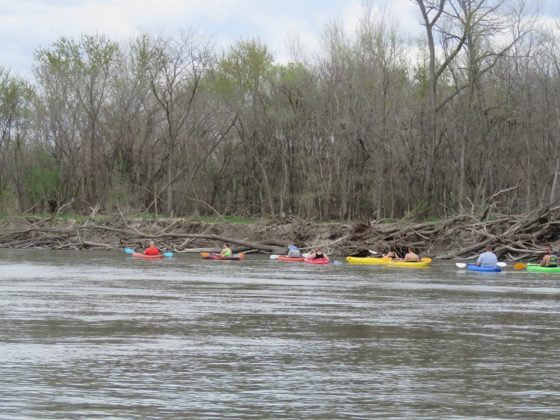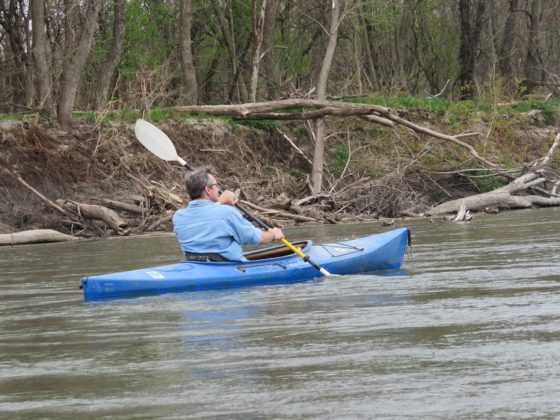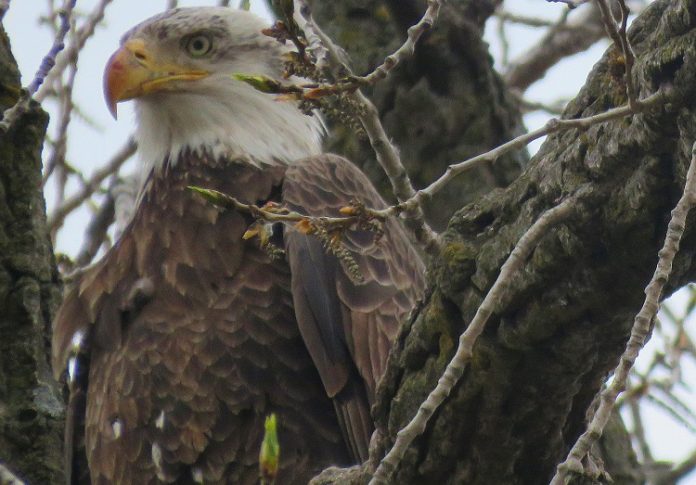
The North Raccoon River was nearly bank full, and the current was moving swiftly when Joe Warnock, Dr. Steve Sohn and I launched our kayaks at Henderson Park near Jefferson. Our destination was the boat ramp at Adkins Bridge, about 11 miles downstream.
In some places we encountered a strong headwind, causing us to strain our muscles to keep from being blown back upstream. But when the wind was at our backs, it was easy paddling.
Other people were also enjoying a day of recreation on the river on the mild spring day. We passed a group of eight people in their kayaks. One family had camped all night on a sandbar and were looking forward to their second night on the river. Another couple was fishing while their little daughter was playing in the sand.
The leaves were still sparse on the trees, allowing us to get a good look at the topography along the river bank. In some places, we saw nearly vertical bluffs 20 to 30 feet high. Most of the bluffs were composed of tan and yellow-orange loess soil.
The loess soil breaks off in vertical sheets, and in several places it was evident that a section of the river bank had recently fallen into the river. At the top of the bank, we could usually see a very dark layer of topsoil that supported the trees and other plants. A layer of rocks, gravel and sand was immediately below the layer of rich topsoil, indicating a sandbar had been there in years past.
The stretch of river we were paddling seemed clear of debris. The only piece of litter we saw was an empty 55-gallon steel barrel wedged into the roots of fallen tree. There were several tiles emptying water into the river. I wondered what chemicals and pollutants were being added to the river.
Seeing wildlife and birds on the river is always a thrill. We saw two small herds of deer and many gnawed trees that were evidence of beaver activity. There were many species of common water birds: kingfishers, wood ducks, blue-winged teal and Canada geese. Turkey vultures always seemed to be soaring overhead.
For the first time this year, I saw a double crested cormorant, a trio of coots and four water birds called “yellow legs.” These three species are migrating to their breeding grounds. I thought it was strange that we did not see any blue herons on this trip. They are usually a common sight on the Raccoon River.
The highlight of the trip was seeing a pair of bald eagles and their nest. One eagle was in a nearby tree, and the other eagle was perched on a limb near the nest. It is difficult to tell the gender of eagles, but they had to be a pair. A mated pair of eagles would not let another eagle near their nest.
We estimated the nest to be about seven feet from top to bottom and nearly as wide. The nest must have been used by this pair in previous nesting seasons. We stopped on a sandbar across from the nest to get a better view of the birds and take photographs.
At Squirrel Hollow Park in Greene County, there is a low head dam across the river. In times of low water, it is necessary to portage around it, but not this time. The water was churning with eddies and some whitecaps, but the water was high enough to allow us to easily paddle over the dam.
The trip was over after two-and-a-half hours, too soon for such a beautiful day. We are looking forward to another trip on a different section of the river.









